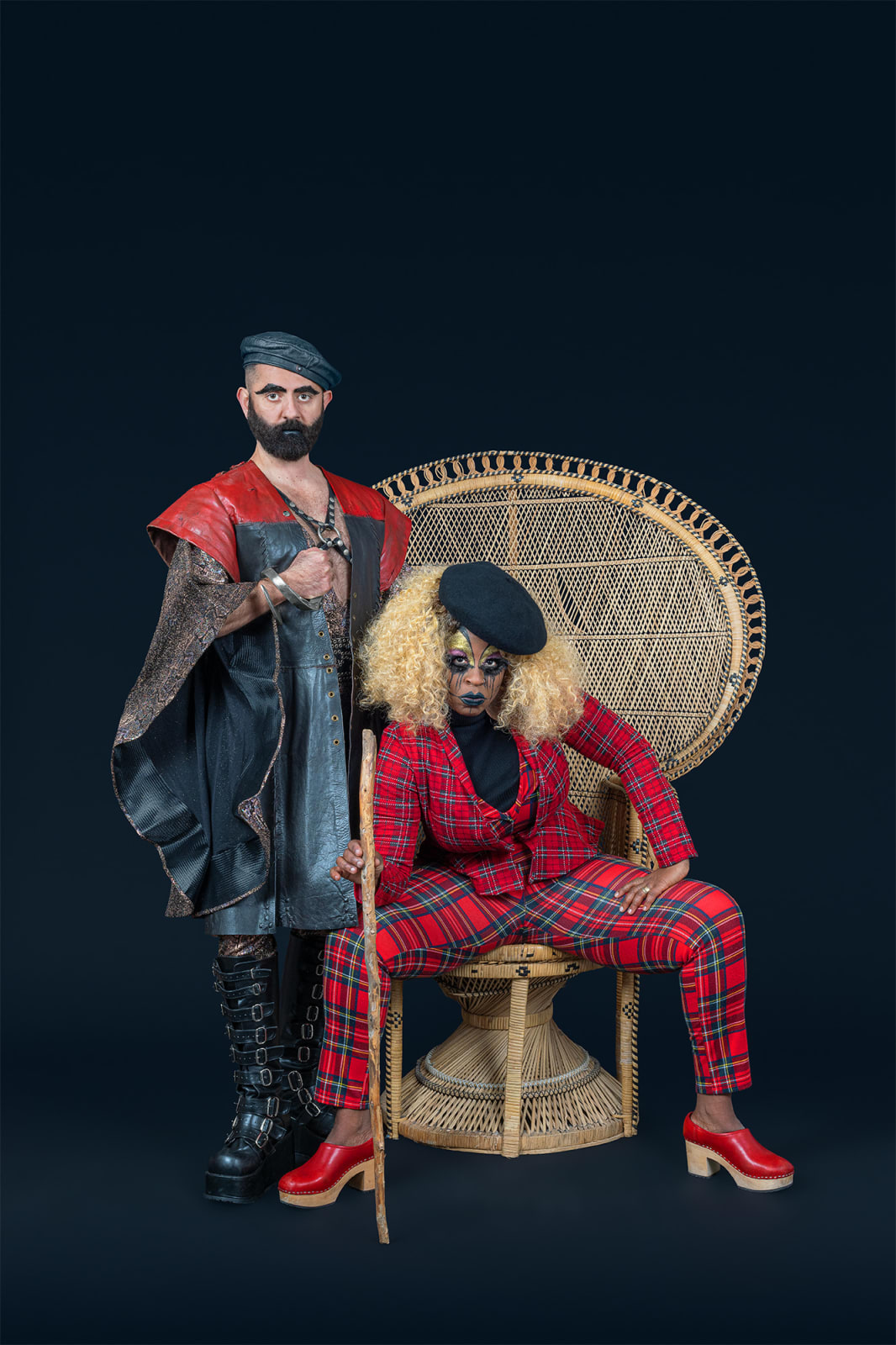The Armory Show 2021: Jamil Hellu
 Booth P26
Booth P26
There is something unabashedly sweet about Jamil Hellu’s ongoing photographic series Hues (2017—) that leaves a queer soul feeling utterly satisfied; so much so, that I have compared my first encounter with the work to nibbling on a rainbow whirly pop. Over the course of four years, Hellu has created a body of strikingly saturated collaborative portraits of himself posing with fellow queer people across various races, ethnicities, genders, and cultural backgrounds. In a time marked by the anti-social turn in queer scholarship, Hellu maintains an admirable commitment to celebrating the queer community through extravagant physical presence.
Set against vibrant monochrome backdrops, the photographs read as fashion shoots for a queer utopia of diverse deliciousness. Insinuating both the performative and deeply personal connotations of dressing up, with a camp taste for exaggeration, Hellu melds with his subjects by echoing or complementing their outfit, which the two agree upon in advance, with his own. The clothing is always connected to the subjects’ identity, whether it’s rooted in their cultural heritage, references a childhood dream, or plays into a sexual fantasy. Stepping away from the camera and into the frame, Hellu at times physically supports his subjects’ entire weight, while at other moments gently rests his hand on a single body part, or surrenders his own weight.
In my personal favorite, the artist firmly wraps his arm around Michelle Alcedo’s waist, who in turn grabs the back of Hellu’s head. Turned away from the camera, we only catch a glimpse of Hellu’s face as he holds up a hand-mirror, while Alcedo poignantly glares into the camera. The caption, which also functions as the title, reads:“‘As an immigrant, my coming of age meant a fragmented life. I was never Filipina enough while struggling to assimilate,’ shares Michelle Alcedo. ‘As an older femme dyke, I find power in my queerness and feel a sense of belonging. I am free to integrate all that I’m meant to be.’” Throughout the series, these captions give voice to the subjects themselves, who narrate pieces of their life stories to Hellu. Some are prose-like, such as Alcedo’s, while others remain short and factual. Chalwe Ranney’s caption reads:“Chalwe Ranney grew up in Zambia. Homosexual practices have been present in his Bemba tribal culture for centuries. Homosexuality is otherwise illegal in the country.” Queerness is at the core of every single one of these participatory portraits, showcasing the myriad ways in which it manifests, shapes, and intersects with various parts of the self.
Born in Brazil, Hellu’s project is informed by his own journey of navigating his Syrian and Paraguayan heritage in relation to his queer identity. Growing up with a pressure to conform to rigid expectations of masculinity in order to avoid violence, much of Hellu’s practice has revolved around dismantling heteronormative notions of gender and sexuality. As a medium that lends itself particularly well to the exploration of identity, photography has provided fruitful ground for an impressive lineage of queer artists with a similar pursuit as Hellu. The influence of Claude Cahun is subtly palpable, as negating gender through a performance of self for the camera conceptually underpins Hellu’s work. In terms of aesthetic sensibility, however, the artist shares notable affinities with Catherine Opie and Mickalene Thomas, both of whom use bright colors paired with striking poses (Opie offers intimate portraits of her queer community and the stigmatized subcultures within it, while Thomas importantly brings racial identity and black sexuality into the conversation).
What differentiates Hellu from his ancestors and peers, however, is a distinctly playful sense of humor. While many of the photographs in the series tackle stereotypes through a dichotomy between traditionally gendered attires and the genders of those wearing them - heightened by the deadpan poses and facial expressions -Hues should by no means be misunderstood as frivolous. Instead, the artist cleverly utilizes humor as a political tool to urge against queer assimilation, and makes a conscious effort to highlight the significance of diversity. Through visual strategies of lush amplification, Hellu reveals a simultaneous process of masquerade and exposure that takes place in manifold hues of the queer body, and confirms the beauty of connecting across difference.
-Ksenia M. Soboleva











